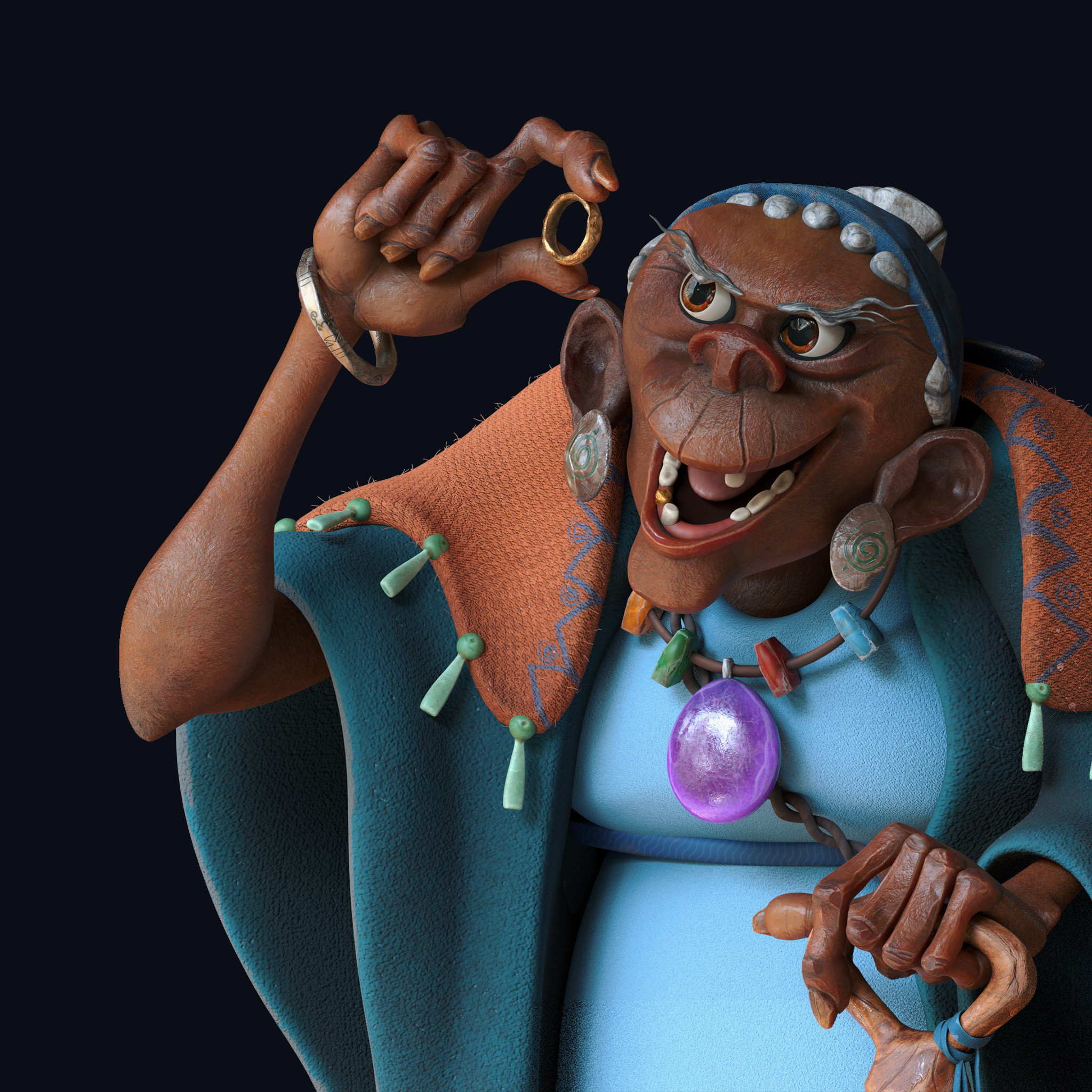Impacting Animation/VFX Knowledge – Concept Art Techniques in Animation and Films by Segun Samson
In the dynamic world of animation and VFX, concept art plays a pivotal role in shaping visual narratives, character design, and world-building. One of the prominent figures making waves in this field is Segun Samson, a Nigerian concept artist whose career journey serves as a beacon of inspiration for aspiring artists. His story, encapsulated in a detailed discussion with CGAfrica, spans multiple career milestones and sheds light on the nuances of concept art, the role of mentorship, and the importance of understanding the business side of animation.
Segun Samson’s Journey in Concept Art: A Transition from Comic Art
Segun Samson’s professional journey into the world of animation and concept art began with a passion for comic art. Like many artists, his early fascination with illustration was deeply rooted in comics, where his ability to tell stories through drawings developed. This foundation eventually led him into the broader and more intricate world of concept art, a crucial element in animation and films. Concept art, with its combination of creativity and technicality, requires more than just drawing skills; it demands an understanding of visual storytelling, character development, and mood creation.
Segun’s journey is a testament to the idea that transitioning between art forms, while challenging, can be immensely rewarding. His leap from comic art to animation allowed him to broaden his skillset, offering him opportunities to work on high-profile projects and with well-known studios like Dreamcast and Triggerfish.
Career Milestones: Working with Dreamcast and Triggerfish
As Segun honed his craft, his talent led him to collaborate with major studios such as Dreamcast and Triggerfish. His portfolio quickly expanded, and he contributed to notable projects like Monster High: Electrified and Jungle Beat, both of which allowed him to showcase his unique style and artistic vision. Monster High, for instance, demanded a creative approach to character design, where exaggerated features and stylized elements were key. This project, aimed at a younger audience, demonstrated Segun’s ability to cater to various artistic demands while maintaining his signature style.
Perhaps one of Segun’s most remarkable achievements is his contribution to the Jungle Beat series, a project that has garnered over a billion views on YouTube. This staggering number highlights the growing influence and global reach of African animation. Working on Jungle Beat not only helped solidify Segun’s position in the industry but also contributed to the rising visibility of African content on the global stage.
The Importance of Mentorship in Career Development
A recurring theme in Segun’s career has been the critical role of mentorship. Mentorship, as he discusses, provided him with both local and international perspectives, offering him a chance to refine his skills under the guidance of experienced professionals. His mentors critiqued his work, helping him navigate the often overwhelming world of animation. Importantly, Segun’s journey underlines the significance of seeking feedback and constructive criticism—a practice essential for any artist wishing to grow and evolve.
Mentorship, in this case, was not just about improving technical skills but also about understanding the industry’s demands and expectations. Segun emphasizes how reaching out to mentors gave him invaluable insights that textbooks or tutorials could never offer. For many aspiring African artists, mentorship remains a crucial, albeit sometimes inaccessible, resource, making Segun’s story all the more relevant.
Creative Process in Concept Art: From Sketches to Character Design
One of the most fascinating parts of Segun Samson’s discussion is his explanation of the creative process behind concept art. His approach involves multiple stages, from rough sketches to fully realized character designs and environment explorations. Using tools such as Wacom tablets and software like Adobe Photoshop and Corel Painter, Segun brings his ideas to life, gradually refining them through feedback and iterative design.

credit: Segun Samson
In concept art, the initial sketches serve as a blueprint for what will later become the characters and worlds seen in animation and film. Segun notes the importance of starting with broad strokes—defining the basic shapes and forms of characters—before delving into the finer details that give them personality and depth. This method ensures that the core elements of the design are strong before the complexities are added.
For environment design, Segun explores various compositions, lighting, and color palettes to set the mood of the scene. This process is crucial in animation, as environments often serve not just as backdrops but as integral elements that influence the narrative.
Understanding the Business Side of Animation
While many artists focus solely on the creative aspects of animation, Segun stresses the importance of understanding the business side of the industry. For artists in animation and VFX, it is not enough to be skilled in design; one must also be aware of the financial and operational facets that drive the industry. Segun’s emphasis on the business of animation is a key takeaway for any artist looking to build a sustainable career.
In his own experience, Segun has navigated contracts, project deadlines, and client relationships—skills that are essential for anyone looking to work with major studios or freelance successfully. Understanding how to market oneself, negotiate deals, and manage projects is as vital as artistic talent. For African artists, this knowledge is even more critical, as the industry continues to grow on the continent but is still fraught with challenges such as limited funding and access to resources.
African Animation on the Global Stage
The success of Jungle Beat on platforms like YouTube is a significant milestone for African animation. It demonstrates that content from Africa can not only compete on a global scale but also resonate with audiences worldwide. The fact that the series has over a billion views is a testament to the quality of work being produced in Africa, and artists like Segun Samson are at the forefront of this movement.

Credit: Segun Samson
This success also points to a larger trend of increased interest in African narratives, characters, and cultural elements in animation. As more African artists gain recognition, they bring with them stories and perspectives that are unique to the continent, enriching the global animation industry.
Exploring Concept Art Techniques: Tools and Software
Concept art is a highly technical field that requires proficiency with a range of tools and software. For Segun Samson, using a Wacom tablet is second nature. This tool, along with industry-standard software like Adobe Photoshop, enables him to create intricate and detailed artwork that forms the foundation of animated projects. He also uses Corel Painter for its natural brushstroke effects, which allow for a more painterly approach to digital art.
These tools are essential in the pre-production phase of animation, where the visual tone, character aesthetics, and environmental layouts are established. Mastery of these tools enables artists like Segun to efficiently translate ideas into visual assets that can be used by the rest of the production team, from animators to lighting specialists.
FAQs
How did Segun Samson transition from comic art to concept art?
Segun began his career in comic art, which laid the foundation for his storytelling abilities. His transition into concept art allowed him to expand his skills and enter the animation industry.
What role did mentorship play in Segun Samson’s career?
Mentorship was crucial in Segun’s development as a concept artist. He sought feedback from both local and international mentors, which helped him refine his craft and navigate the industry.
What are some major projects Segun Samson has worked on?
Segun has contributed to projects such as Monster High: Electrified and the highly successful Jungle Beat series, which has over a billion views on YouTube.
What tools does Segun use for concept art?
Segun uses tools like the Wacom tablet and software such as Adobe Photoshop and Corel Painter to create his concept art.
Why is understanding the business side of animation important?
Knowing the business aspects of animation, such as contracts, project management, and marketing, is essential for building a sustainable career in the industry.
How has African animation gained global recognition?
Projects like Jungle Beat have demonstrated the global appeal of African animation, with content from the continent reaching massive international audiences.





